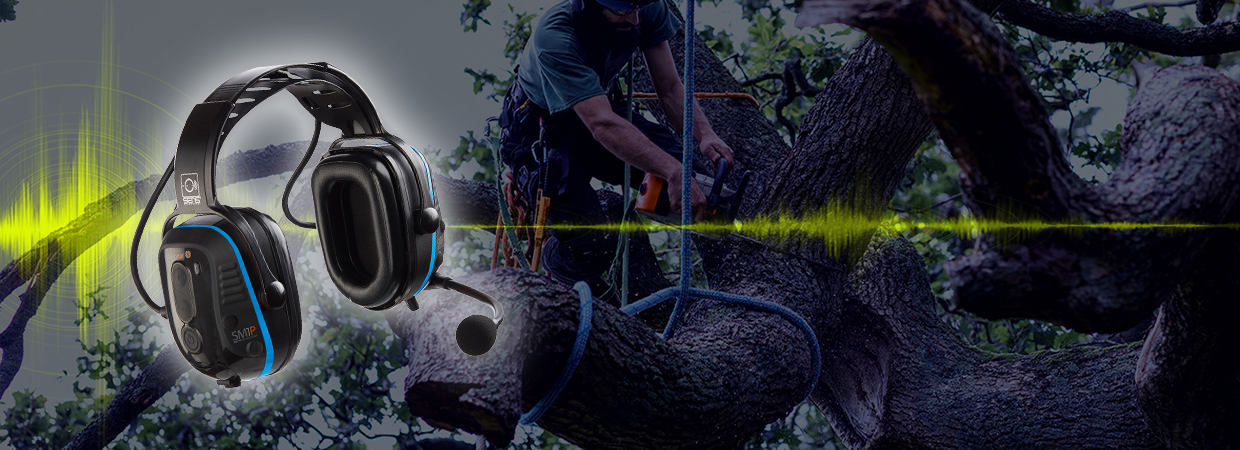- Home
- Blog
- Noise-Induced Hearing Loss
- Hearing-Impaired Workers in High-Noise Environments

Hearing-Impaired Workers in High-Noise Environments
Hearing conservation programs are typically designed to protect workers with normal hearing, but they must also consider those workers that have already been impacted by hearing loss or impairment. Many workers in high-noise environments have already experienced varying degrees of hearing loss and may have special needs. What can be done to keep them protected, but still allow them to continue with their daily activities? These workers face numerous challenges, even in quiet environments, including difficulty communicating with colleagues and problems differentiating important sounds or alarms from other background noises. Some workers may even face differing levels of tinnitus or ringing in the ears.
Hearing Protection programs may not address the special needs of hearing-impaired workers. A research study uncovered that most audiology testing occurs in quiet environments and does not consider how hearing-impaired individuals may function in loud-noise environments. In fact, Occupational Safety and Health Administration (OSHA) rules require workers with little to no hearing ability to wear protection, as they may still have some residual hearing. It is important, therefore, to determine if a worker has a hearing impairment, understand the unique challenges they face, and ensure that they are fully protected.
Determining if a Worker Has Hearing Impairment and Understanding the Unique Challenges They Face
To accurately test hearing in high-noise environments, hearing-impaired workers must remove their hearing aids and undergo testing using OSHA-mandated procedures and headphones. To obtain a valid test on a hearing-impaired individual and those with other hearing-related problems — such as ringing in the ears — it may be necessary to switch from automatic testing methods to manual methods, according to OSHA.
Once a worker is determined to have a hearing impairment, it is crucial to grasp the unique challenges they face in these high-noise environments. In 2012, Purdue University researchers found that background noises can alter the way a hearing-impaired individual’s ears function, and even environments with normal noise levels can pose a challenge for them. Therefore, loud-noise environments pose an even greater challenge, as standard hearing protection lowers the speech volume below the threshold at which a hearing-impaired individual can understand.
Hearing-impaired individuals may choose to only wear hearing aids instead of wearing hearing protection so that they can better hear warning sounds and equipment. However, this is an issue as hearing aids can magnify background noises beyond the OSHA limit of 85 dB(A). Some hearing aids can be worn under protective earmuffs, but most individuals will not use them if they are uncomfortable. Therefore, there needs to be a solution that is both comfortable and safe for hearing-impaired workers.
Hearing Protection that Enhances Comfort and Safety for Workers with Hearing Aides
The best hearing protection is one that employees will always wear, to ensure complete safety in high-noise workplaces. OSHA advises that employers provide workers with at least one choice of an earplug-type protector and one headset or earmuff type. By conducting fit-testing in your workplace, you can determine the type of protector that will work best and provide the most protection in given situations for individual employees.
Most protective equipment does not work effectively for hearing-impaired individuals and can cause more harm than good if remove these devices in high-noise environments. At Sensear, we strive to create unique solutions to protect hearing while allowing workers to communicate and maintain situational awareness using our patented SENS® Technology. A recent Sensear customer with previous hearing impairment had this to say about our hearing-protection solution:
I suffer from tinnitus badly, and these Sensear headsets make a huge difference. Let me try to explain, in my case along with tinnitus comes deafness of varying degrees and it is difficult to protect my hearing now. Using standard ear defenders to block sound out fully, stops me from hearing my colleagues, and without choice, I hear the whistling from the tinnitus, which becomes a big distraction. Using things like earbuds just agitates the tinnitus making it louder.
So being able to choose what I hear and communicate, without removing my ear defense along with the way the ambient noise is suppressed in the Sensear headset, is a massive help. It helps me to stop focusing on the constant whistling that I hear. I have been using Bluetooth® to stream pleasant music just in the background when I'm working alone, this again takes my mind away from the whistling, but doesn't distract me from my work, or what's happening around me. In fact, quite the opposite, it helps me focus more on the job at hand. Tinnitus I find disrupts the simplest of tasks, total distraction to the point of forgetting why I returned to the workshop. This headset allows for taking or making phone calls even in the loudest zones, which is fantastic, and being hands-free makes my life easier in many ways. I would hate to use anything else. I have tried other makes and they are not in the same league.
I hope this explains life with tinnitus/deafness a little better, in my point of view anyway.
Watch the below video of our Smart Headsets helping a municipal city worker hear in a 92 dB(A) utility vehicle while wearing his hearing aid with our headsets. If you'd like to learn more about how Sensear’s Smart Headsets can benefit your hearing-impaired team members, contact one of our representatives today. You can also call us at 1-888-973-6732 (US) or 1-300-859-120 (AU) or email us at info@sensear.com.








